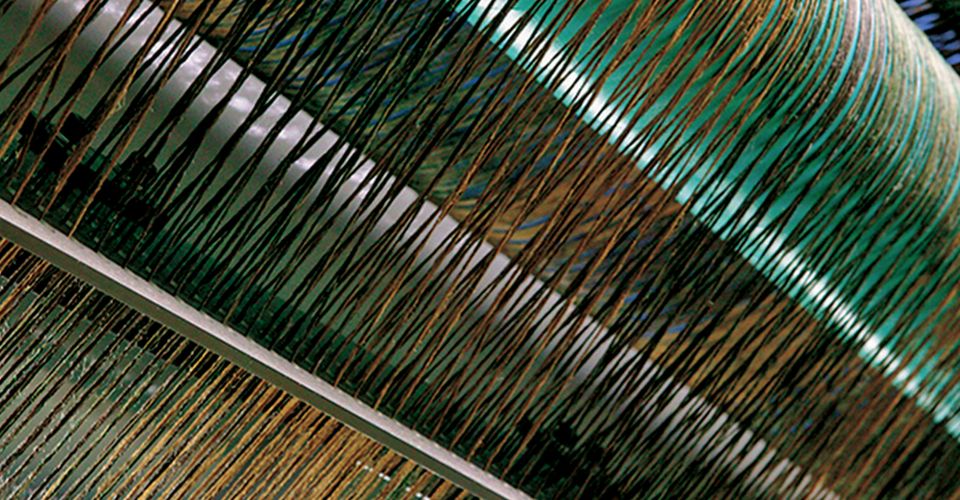One drop of water in a still pond transfers energy to surrounding water molecules and produces a series of rings or ripples. Much like this one drop of water, a human action also triggers an effect – positive or negative. In the realm of sustainability, the positive and negative impacts of our actions are measured in handprints and footprints.
According to Greg Norris, who developed the SHINE Handprint methodology, a handprint is “a contribution that causes positive change in the world – including reductions to your own or somebody else’s footprint.” Your direct handprint is a reduction in your own environmental footprint. But your indirect handprint is your ability to inform, enable and inspire others. So how can the actions of one company, like Interface, start a ripple effect of positive environment impacts?
Interface’s goal to have zero impact on the planet by 2020 has had measurable results not only for our business, but also for others. With our eye on a goal of zero emissions as a company, we’ve deeply reduced the environmental impacts of our business. We’ve transformed our products and redesigned our supply chain.
We’ve turned the idea of sustainability into a positive business proposition for us and for others. And we’ve gone beyond just measuring our environmental footprint to creating an environmental handprint.
Inspiring use of alternative energy
What if a city’s landfill could be used for something positive? That’s the question we posed to the City of LaGrange, where our U.S. manufacturing headquarters are located. Looking for a replacement for natural gas at our factory, we approached City engineers to use the local landfill to make renewable energy. Interface was instrumental in getting the project developed and completed, working closely with the City over a multi-year period. We became a user of the landfill gas for our factory, reducing our environmental impacts by displacing natural gas. We also created a ripple effect, or a handprint, when the excess landfill gas was sold to another local manufacturer.
Inspiring demand for sustainable materials
Additionally, Interface indirectly created a handprint while working to reduce the footprint of our product through our supply chain. What if what goes into a product could actually be beneficial to the environment – and even society? That’s a question we posed to our suppliers, inspiring them to deliver materials that keep our planet in mind.
We’ve partnered with our fiber suppliers to continually reduce the virgin content in the fibers we use for our carpet tiles, incorporating the highest available post-consumer and post-industrial recycled content. When the yarn supplier subsequently sold the recycled nylon to others, we created a broader impact outside of Interface that extended to other companies. Then, we went to another similar supplier and created a further impact using the same approach.
These two actions, the creation of new recycled materials and a landfill gas to energy project, and the ripple effects they created, created a handprint of 1 million metric tonnes of carbon dioxide equivalent (CO2e) during the years they were active.

By encouraging our fiber suppliers to incorporate more recycled content nylon in their yarns, Interface has been able to have an impact far beyond our own products.
The movement from footprints to handprints
Companies within the building and design industry, as well as those across other industries, are seeing the world in a new way and reimagining their products and processes. They’re creating their own handprints, striving for a positive effect on the planet, people and beyond. A few of these companies, highlighted by Sustainable Brands, a global community of brand innovators shaping the future of commerce, include:
- Humanscale: A pioneer and leader of office ergonomics, Humanscale is focused not only on minimising its negative impacts but working to produce significant positive contributions. Their goal is to make an overall Net Positive impact on the Earth. This means considering each and every resource required to manufacture their products, finding ways to go beyond reducing consumption – to give back, replenish, and continue making a positive environmental and social impact on the world. For example, Humanscale was inspired by Bureo (who was inspired by us) to use recycled fishing nets in one of their chairs.
- Kohler: Committed to leaving the world a better place, Kohler is working toward net zero environmental impact by 2035. This means reducing or offsetting all greenhouse gas emissions and sending zero solid waste to landfill; developing innovative energy- and water-saving products; and encouraging people to take action. For example, Kohler’s WasteLAB uses industrial waste to create products like tiles and buttons.
- Owens Corning: In working toward achieving its footprint reduction goals by 2020, Owens Corning has set long-term goals, with a target date of 2030, that address the most critical issues, locally and globally. This means becoming a net-positive company, where the positive impacts of its people and products far outweigh the negative impacts. For example, their certified insulation products are made with 100 percent wind energy. For architects, the products will help them design buildings with reduced life cycle impact and achieve the recognised goals of the Architecture 2030 Challenge and U.S. Green Building Council’s LEED certification.
- Eaton: On a mission to improve the quality of life and the environment through the use of power management technologies and services, Eaton is exploring how it can create products that have a positive impact. This means not only offering products and services with positive environmental impacts, but also reducing the impact in its own operations, strengthening its workforce and local communities, and doing business right. For example, the company set a target for 100 percent of its manufacturing sites to be zero-waste-to-landfill certified by 2030.